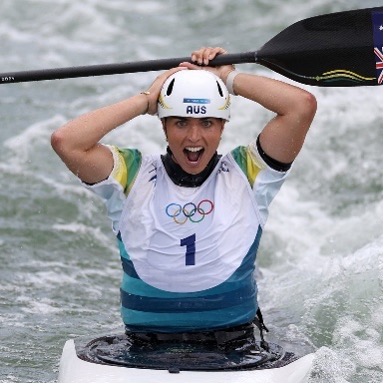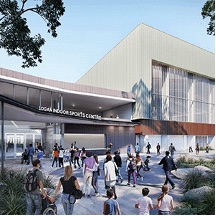
More than 1,340 days after Queensland won the Games bid, the 2032 Delivery Plan and roadmap towards the Brisbane 2032 Olympic and Paralympic Games and beyond, has begun.
The Games are a once-in-a-generational opportunity to deliver a legacy committed to the long-term benefits and investment in the community. They can lead to a stronger economy and better places to live and work, creating spaces that bring people together and make life better for those who come after us.
The long-term legacy of an Olympic and Paralympic Games strives to deliver Economic Benefits by attracting investment, creating jobs, and boosting tourism; Social Impact by promoting social inclusion, raising awareness of important issues, and providing opportunities for participation in sports and other activities; and Environmental Sustainability by minimising environmental impact, promoting sustainable practices, and leaving a positive environmental legacy. The Games provide an impetus for adopting a circular economy approach, aiming for a net-zero carbon and net-zero waste region.
There is a huge opportunity to embrace the diversity the Games bring and to acknowledge and incorporate the diversity that already exists within our communities. This includes creating accessible pathways for everything from sport to health and wellbeing programs, employment, industry engagement, education and cultural participation.
Through tourism and the prism of sport, the Games has the potential to elevate and showcase Queensland to a global audience and give businesses and investors the confidence that Brisbane and Queensland’s cities and regions should be strategically considered.
The benefits of hosting the Games include job creation, tourism and increased trade and investment. According to Trade and Investment Queensland, the 2032 Games are forecast to drive more than 90,000 jobs per year, $3.5 billion in social benefits, and more than $4.6 billion in tourism and trade boost for Queensland.
The 2032 Games present a unique opportunity to fast-track essential transport links and improvements, and revitalise existing sporting and entertainment assets, as well as build new infrastructure that can be transitioned post-Games to social housing and community facilities. Communities across the state will benefit from additional sports facilities that are provided in the lead up to the Games, used to hold Games events themselves and others that will be used for training facilities.
To be ready for the Games, South East Queensland in particular will need to see major developments to ensure that it is connected and event-enabled in time for the Games. This infrastructure will also help to meet the needs of a growing population across South East Queensland and Brisbane.
The construction industry is critical to ensuring a positive and lasting legacy, both in directly providing the facilities and infrastructure needed to deliver the Games, and in building the skills and know-how that will carry beyond 2032. There is also a unique opportunity to use the Games as a catalyst to transform how we deliver the homes and buildings Queenslanders need.
Well-planned infrastructure will help South East Queensland become an even more exciting and welcoming region. Successful games have made choices not just on short-term financial implications but on long-term opportunity and the merits of investing in a city and region’s infrastructure for lasting benefits and impact.
The role of Regional Development Australia (RDA) role is to collaborate with all levels of government, businesses, and community groups to foster and support long term economic growth and development in Logan and Redlands.
The Brisbane 2032 Olympic and Paralympic Games provide a once-in-a-generation opportunity to act as a catalyst for transformative change in cities like Logan and Redlands - accelerating infrastructure, attracting investment, and delivering long-lasting social and economic benefits for local communities.
Supporting and promoting the legacy plans and ambitions for the region and South East Queensland will form an important part of the RDAs Business and Strategic Plans going forward. The RDA will advocate for the maximum legacy outcomes possible from the Games. It will help identify and advocate for critical infrastructure projects to improve connectivity and support regional development and ensure that development aligns with community needs and values. It will promote essential workforce development programs to meet regional labour market demands as well as sustainable practices that address environmental challenges within the region. It will also support the region to attract new industries, promote innovation and support supply chain challenges.
Logan and Redlands
Logan and Redlands are diverse and thriving areas strategically positioned in South East Queensland, nestled between Brisbane and the Gold Coast and with significant current and future growth potential. Ideally placed to connect to regional and international markets, with excellent connectivity to ports and airports, and with a skilled workforce drawn to an exceptional lifestyle.
Both regions are integral to the 2032 Delivery Plan, each contributing unique infrastructure projects and legacy initiatives.
Logan City is proactively leveraging the Brisbane 2032 Olympic and Paralympic Games through its 2032 City of Logan Legacy Roadmap. The roadmap includes 19 key initiatives designed to promote active living and participation in sport; leverage multicultural roots within the local community; secure new infrastructure and facilities; and stimulate economic growth.
A forum in May 2025 brought together community organisations, businesses and government agencies to further shape the City of Logan Legacy Road map into a plan that will deliver even greater benefit for the community for generations to come.
A new $142.1 million Olympic-standard multi-purpose indoor stadium that will benefit the local community for generations to come will kickstart the legacy roadmap.

The Logan Indoor Sports Centre will address a high demand in Logan for indoor sporting facilities and feature nine indoor courts across two separate halls that can accommodate a range of sports, para sports and large-scale events and is capable of hosting 7000 spectators.
The new indoor stadium will be the shining jewel across a range of Logan facilities that have the potential to support competition, training and preparations for the 2032 Games and potentially host Olympic and Paralympic events.
The new venue also supports Council’s plan to kickstart urban renewal in targeted locations across the city, including Logan Central. It will help Council advocate for the development of more hotels and other short-term accommodation options while also showcasing Logan as a key logistics hub for the entire SEQ region.
“As the fastest growing city in Queensland with a young and diverse population that has Olympic-sized dreams for the future, this investment by the state and federal governments will be a legacy from the Games that our community will benefit from for decades to come.” – Logan City Council
The primary legacy for Redlands Coast is the establishment of the Redland Whitewater Centre as a host venue for the Canoe Slalom events at the 2032 Games. A venue that will also serve as a community facility for active recreation. The centre is envisioned to support adventure sports, training, and be as a year-round swift water training facility for emergency services personnel.

Community benefits will include the establishment of local parklands, waterpark and lagoon space, as well as an outdoor stage and adventure tourism space. This will also lead to a long-term boost to the tourism economy and give people more reasons to visit and stay in the Redlands. Through careful planning and active community engagement, the region can create a legacy that benefits residents long after the Games conclude.
Where Redlands may learn from previous Games is not relying on competitive canoeing as the only use of the slalom venue post the Games or allowing the overall development to rely on the slalom venue.
The precinct has the advantage of being on the doorstep of Brisbane the host city and the opportunity for it to be used as a recreational as well as a training facility for years to come. It can benefit from urban flooding becoming more and more apparent in South East Queensland and New South Wales and the need for training and development around flood rescue and support.
The Redlands Coast's involvement in the Brisbane 2032 Olympics presents an opportunity to bring enhancements to the region's infrastructure, economy, and tourism, including the potential for improved transport options such as the Eastern Busway Corridor upgrade toward the Metro extension.
A spokesperson for Redland City Council said the planned Redland Whitewater Centre was a “region-shaping project” and said, “Being an event venue city will give businesses and investors the confidence that our city is worthy of their attention, and Redlands Coast has a golden opportunity to participate under this once-in-a-lifetime spotlight.”
The Redlands Coast 2032 Legacy Working Group has been established to ensure enduring benefits from the Games. The group focuses on maximising community and economic advantages, aligning with the broader goals of the 2032 Delivery Plan.
Both Redlands and Logan will benefit from developing a comprehensive legacy plan and vision that is aligned with broader strategic goals and will deliver maximum social, economic, and environmental benefits in a post-Games future. Whilst addressing community concerns regarding environmental impacts and financial implications for ratepayers.
The opportunity the Games bring is a catalyst for realising a vision of a lasting legacy for future generations which requires strategic planning and investment. By prioritising investments that balance cost considerations with long-term value, we can ensure that Brisbane's Olympic and Paralympic legacy extends far beyond the four weeks of the Games.









